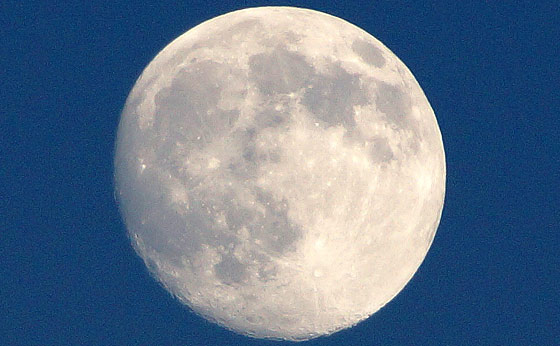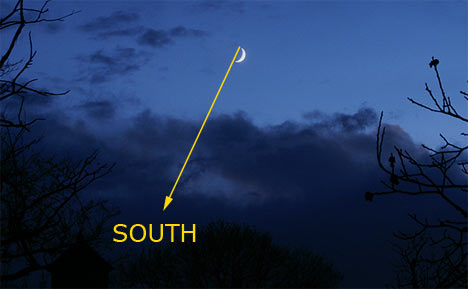Find Your Direction By The Moon

It is possible to find your direction at night by the moon (if you can see it).
Whether you’re lost, or navigating by night, there are ways to discover the general compass rose, North-South-East-West by using the moon.
Here’s how:
These basic principles relate to the northern hemisphere. For the southern hemisphere, the north and south compass points will be opposite.
Since we know that the reason we can see the moon’s light at night is because it reflects the light of the sun, this relationship of the moon to the sun can help us use moonlight to determine general direction.
Method 1
Similar to the sun, the moon will appear to generally (roughly) move in a east to west direction as it moves across the night sky. This method will take a long time while observing the moon’s arc across the sky.
Method 2
Visualize the following in ‘3D’ space:
The light of the moon (the reflection of the sun onto the moon) will generally be facing west between sunset and midnight (because the sun sets in the west and is where the light source is originating during this time period).
The light of the moon (the reflection of the sun onto the moon) will generally be facing east between midnight and sunrise (because the sun rises in the east and is where the light source is originating during this time period).
Method 3
This is the quickest (instantaneous) method for discovering the general direction of South:
If the moon is in a crescent phase, simply draw an imaginary line or hold a stick through the tips of the moon’s “horns” (from one moon crescent point to the other) down to the horizon.
The point where it touches the horizon is roughly South for the northern hemisphere and North for the southern hemisphere. The higher the moon is in the sky, the more accurate this method.
Here’s how to find North by locating the North Star.

